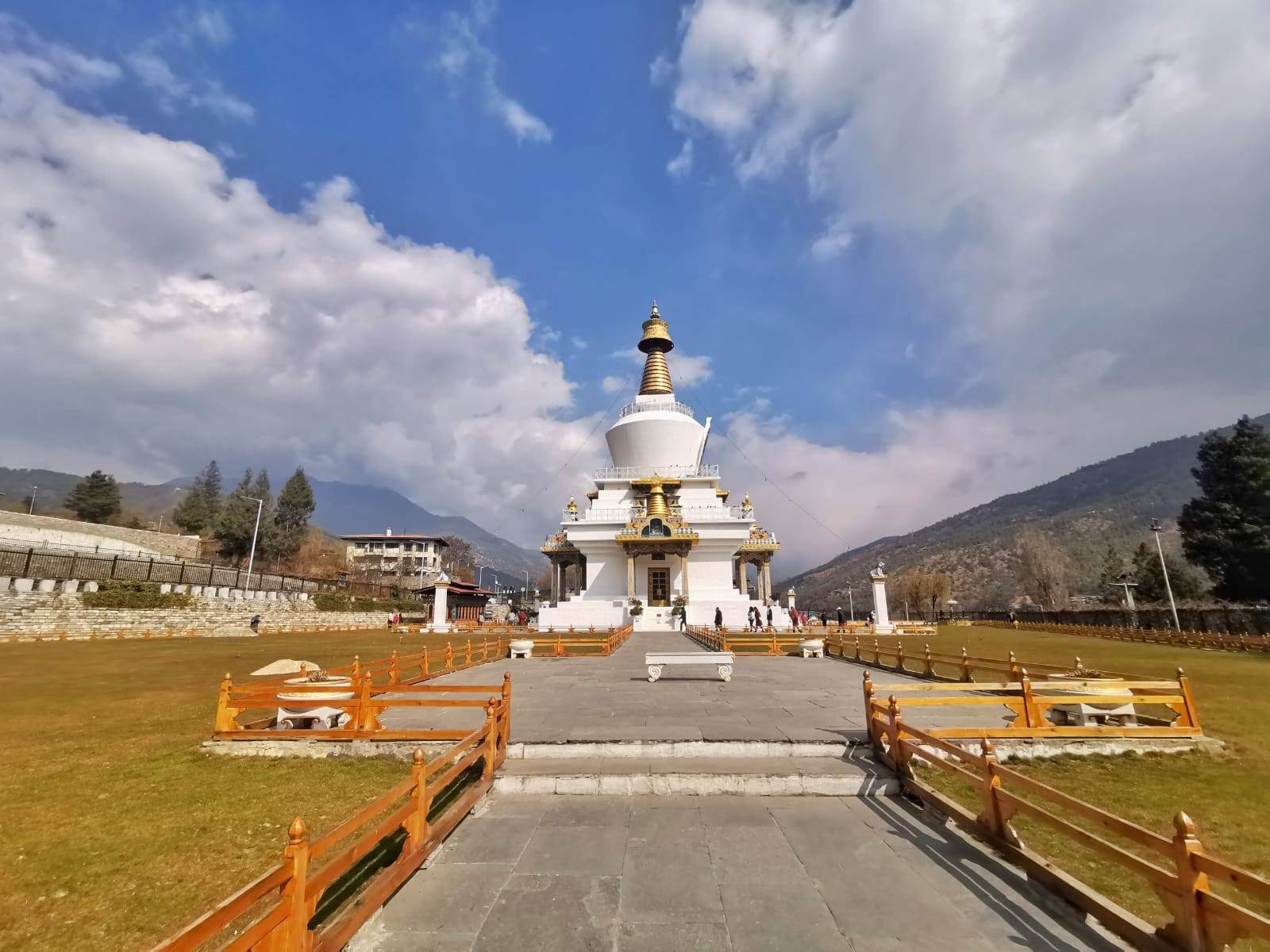Start your morning at the lively Centenary Farmers’ Market, where local villagers gather every weekend to sell fresh produce, cheeses, and handmade crafts along the banks of the river. This bustling market is the heart of Thimphu’s community life.
Visit the fascinating National Folk Heritage Museum, which is dedicated to preserving Bhutan’s rich past. Housed in a traditional 19th-century building, the museum brings history to life through exhibitions, demonstrations, and artefacts, allowing you to experience rural Bhutanese culture up close.
Next, immerse yourself in the vibrant world of Bhutanese weaving at the National Textile Museum. Here, you’ll witness master weavers at work and learn about the symbolic significance of Bhutan’s textile designs—a living art form preserved by the Royal Government.
Pay your respects at the National Memorial Chorten, built in 1974 in honour of King Jigme Dorji Wangchuck. This iconic stupa is one of the most visible religious landmarks in Bhutan and is constantly encircled by worshippers spinning prayer wheels and chanting mantras.
Experience the traditional art of papermaking at the Jungshi Handmade Paper Factory. Watch skilled craftsmen transform the bark of local trees into Deh-sho paper, used by monks for sacred texts and woodblock printing.
A short drive from Thimphu takes you to Simtokha Dzong, the oldest fortress in Bhutan. Built to imprison a demon that once terrorised the region, the dzong is famed for its intricate Buddhist paintings and wood carvings.
End your day at the majestic Thimphu Tashichho Dzong. The largest fortress-monastery in Thimphu, it serves as the seat of the King and the central monastic body. Marvel at its striking Bhutanese architecture—built entirely without nails or written plans.

